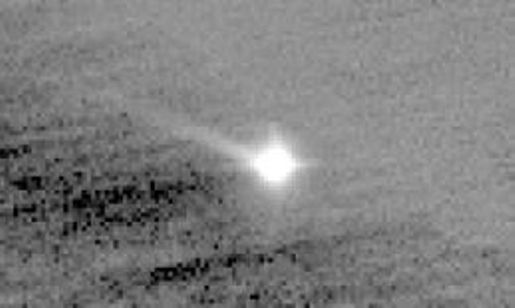
We’re running the gamut of planet-related news today. First, a new Earth-like planet that might be capable of supporting life has been discovered in the Goldilocks zone. Now, a planet that we all thought we knew to be a planet might not actually be a planet. The planet closest to the sun, Mercury, has a comet-like tail that makes it less of a planet and more of a comet-planet.
However, there’s a difference between a normal comet and Mercury the planet-comet. A normal comet is mostly dust and water vapor, and that’s why it has that trailing tail. Mercury’s comet-like tail isn’t water (and thankfully, it’s not frozen urine), it’s super-heated sodium ions from the planet’s surface. Due to the planet’s closeness to the sun, it gets very hot. The heat of the sun is so strong it powers the sodium atoms that make up Mercury’s surface and give them a turbo boost off into orbit. As the planet rotates, the atoms spring off and form that comet-like tail.
If they didn’t use so much math, I’d have loved to have been an astronomer. That stuff is so neat to me, even if I don’t really understand much of it.
Tags: astronomy, Mercury, planet-comet, planet with a comet’s tail, comet-tailed planet, unusual discoveries, NASA, Messenger probe, Mercury has a comet-like tail, Mercury’s sodium ion tail, new discoveries, unusual planet facts, mercury’s tail







